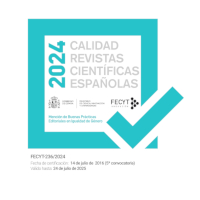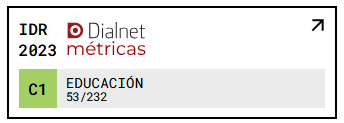Divergencias significativas entre la formación académica y el perfil profesional en la especialidad de Maestro en Lengua Extranjera
DOI:
https://doi.org/10.18172/con.536Keywords:
Professional profile, studies program, teacher training, language teaching, second language teachingAbstract
This brief paper calls attention to the current disconnection that exists between the recommendations of the Spanish Department of Education and the programs currently in use in the Spanish Escuelas de Magisterio. The present tendencies of second language teaching in Europe recommend an early exposure of students to the target language (kindergarden and first years of primary school), but in order to teach children at this level teachers must master a type of classroom speech which is often ignored in foreign language instruction at university level. In our opinion primary school teachers are not well trained to effectively communicate with very young students. So the only alternative for Spanish foreign language teachers is to carry out a traditional formal teaching of the language which is not the best way to motivate young students. The ultimate responsibility in this situation lies with professors in the Escuelas de Magisterio. In order to demonstrate these deficiencies we here use as an example the implementation of two simple child games.Downloads
References
ARTIGAL J.M. (1990). Uso/Adquisición del lenguaje como construcción de territorio compartido. En Ponencias y Comunicaciones del XVI Congreso de AELFA. Madrid: Inserso, Ministerio de Asuntos Sociales.
CASTELLOTI, V. y DE CARLO, M. (1995). La formation des enseignants de langue. París: Clé International.
COURTILLON, J. (1989). Lexique et apprentissage de la langue. En Lexiques. Paris: Hachette.
DULAY, H. y otros (1982). Language Two. Oxford: Oxford University Press.
HEATON, J.B. (1981). Using English in the Classroom: A Functional Approach for Teachers. London: Longman.
HUGHES, S.G. (1981). A Handbook of Classroom English. Oxford: Oxford University Press.
KLEIN, W. (1989). L'acquisition de langue étrangère. Paris: A. Colin.
KRAMSCH, C. (1984). Interaction et discours dans la classe de langue. Paris: Hatier.
KRASHEN, S.D. (1981). Second Language Acquisition and Second Language Learning. Oxford: Pergamon.
O'NEIL, CH. (1993). Les enfants et l'enseignement des langues étrangères. Paris: LAL, Hatier.
PENFIELD, V. y ROBERTS, L. (1959). Speech and Brain Mechanisms. Princeton, NJ: Princeton University Press. Primaria (Caja Roja) (1992) Madrid: M.E.C.
WIDDOWSON, H.G. (1978). Teaching language as communication. Oxford: Oxford University Press.
WILLIS, J. (1981). Teaching English Through English. London: Longman.
ZANÓN, J. (1992). Cómo no impedir que los niños aprendan inglés. En Comunicación, lenguaje y educación, 16, 93-109.
ZANÓN, J. (1999). La enseñanza del español mediante tareas, Madrid: Edinumen.
Downloads
Published
How to Cite
Issue
Section
License
The authors retain copyright of articles and authorize Contextos Educativos. Revista de Educación the first publication. They are free to share and redistribute the article without obtaining permission from the publisher as long as they give appropriate credit to the editor and the journal.
Self-archiving is allowed too. In fact, it is recommendable to deposit a PDF version of the paper in academic and/or institutional repositories.












